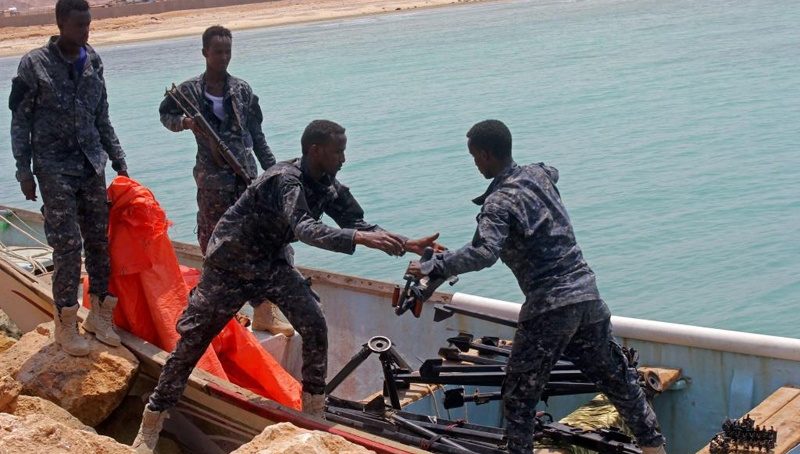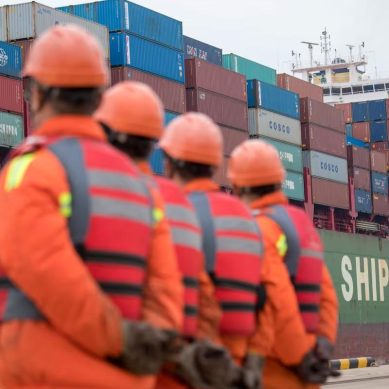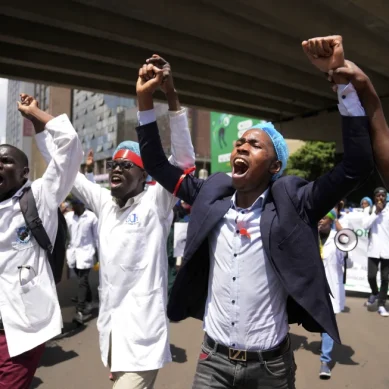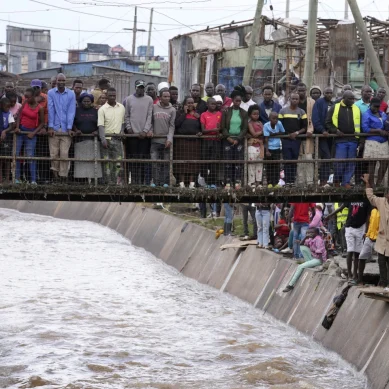
Imminent clear-out of African Union peacekeepers from Somalia after more than 12 years of reining in terrorism and illicit arms trade is expected to trigger an uptick in transmutational crimes in East Africa, with latest crime research findings in the Horn of Africa showing an upward trajectory.
The data accrued between 2021 and 2023 ranks East Africa highest in the world, followed by West Africa. The reasons given for the upsurge in illicit arms trade is multiplicity of conflicts and proximity to the world’s axis of religious extremism and illegal arms incidence in the Middle East.
The Global Initiative against Transnational Organized Crime (GI-TOC) report that was published this week identifies Somaliland’s Bender Qaasim or Bossasso seaport and Puntland in Somalia as key transmit points for small arms and light weapons to conflict region in Somalia, Ethiopia, Eritrea, South Sudan, Sudan, Mozambique and Central Africa Republic. The data, however, does not rank Kenya, while is said to experienced lowest incidence of illicit arms peddling in the region.
West Africa, which has become a theatre for non-state armed groups such as Wagner Group, Islamic States and Boko Haram, among others, has the second highest incidence of arms trafficking in the world, according to the report by GI-TOC released this week titled Global Organized Crime Index 2023: A fractured world released on September 26.
The report examines data accrued from 15 “criminal markets” or categories and compares them with their 2021 findings. The latest findings show an upward trajectory worldwide, but East Africa recorded the highest incidence of arms trafficking from Middle East – mainly Yemen – and destinations being lawless Somalia, Djibouti, Eritrea, Ethiopia, Sudan and South Sudan.
Intriguingly, Kenya has been in the vortex terrorism in the region and is currently grappling with armed banditry in the northeast, northwest and parts of the Rift Valley, does not feature in the findings.
The 15 criminal markets or practices are human trafficking, human smuggling, extortion and protection, arms trafficking, counterfeit goods, illicit trade in excisable goods, flora crimes, fauna crimes, non-renewable resource crimes, heroin trade, cocaine trade, cannabis trade, synthetic-drug trade, cyber-dependent crimes and financial crimes.
East Africa leads the continent in two criminal markets: illicit arms trafficking and human trafficking with Somalia pole position in the former, while South Sudan is singled out for human trafficking in the form of child soldiers, sex trade and cheap labour.
“The prevalence of this criminal practice is correlated to various factors, including the numerous ongoing conflicts in Africa, the economic push factors that leave people vulnerable to trafficking and the involvement of state-embedded actors in facilitating these activities. In the case of human trafficking, Eritrea and South Sudan were among the highest scoring countries under the market, at 9.0 and 8.50, respectively,” according to GI-TOC findings.
The data accrued from 15 criminal markets in the world were measured on a scale of 0-10 incidence or frequency, with the 10 score being the highest.
The project is supported by the European Union and is being implemented by the Institute for Security Studies and Interpol in collaboration with GI-TOC.
Save for Tanzania, all the other countries in East Africa – especially those closer to the Indian Ocean – had an index of 7+ in illicit arms trafficking with the Somalia, Ethiopia, South Sudan, Sudan and Eritrea at the summit. The high incidence, the report says, is related to internecine civil strife that make it difficult to enforce domestic laws or police the countries with the help of international law.
GI-TOC reports, “With an average score of 5.77, arms trafficking is the third most pervasive criminal market in Africa caused largely by the redirection of arms procured by governments in zones of prolonged conflict such as Central and East Africa. The latter is the highest scoring region in the world for arms trafficking, with a score of 7.78, which is an increase of 0.67 points since the last iteration of the Index. With regard to arms trafficking, all countries in East Africa scored either 7.0 or above, except for Tanzania (6.0), meaning that the market is highly pervasive everywhere in the region, albeit with certain contextual differences. Sudan (9.0), Somalia (9.0), Ethiopia (8.50) and Djibouti (7.50) have some of the highest arms trafficking scores in East Africa, driven largely by armed and ethnic conflicts.”
The increase in human and arms trafficking in Ethiopia is linked to the conflicts in Tigray and Oromia regions that have claimed thousands of lives, claims that are supported by the World Food Programme and Doctors Without Borders reports.
“Ethiopia (7.0) recorded a notable increase in arms trafficking, a function of the civil war in Tigray, which has reportedly led to an escalation in small arms and light weapons trafficked in the region and caused spillage of firearms from war-torn areas into other parts of the country, specifically Addis Ababa. In Sudan, multidirectional arms trafficking remains a problem, with external and internal actors continuing to supply weapons to the country and little transparency or accountability in how state and paramilitary weapons are managed or distributed, the GI-TOC report says.
The report is corroborated by Interpol’s own assessment that adds another dimension to arms circulation in Africa. Interpol says explosive precursor chemicals and initiators are also being used by non-state armed groups to manufacture explosives used in illegal mining, blast fishing and conflict.
This form of weaponry is becoming fashionable in some Central African countries with DRC in the lead with 9.0 score, followed by Central African Republic (9.0), Chad (8.50) and Cameroon (7.50). Conflicts in the four countries are spurred on by “the trafficking of explosives for use in armed conflict by non-state armed groups such as Boko Haram and the Islamic State in West Africa in the Lake Chad basin, and rebel groups Retour, Réclamation et Réhabilitation and the Allied Democratic Forces.”
The scramble for natural resources is identified part of the factors that feed illicit gold trade in DRC, where both pro-government and rebel militias profit from the market.
“More than 90 per cent of the DRC’s gold is smuggled to neighbouring countries in the region, including Uganda and Rwanda, where it is then often refined and exported to international markets. The continent also sees significant levels of illicit wildlife trade with East Africa scoring 5.94 for fauna crimes, followed by West Africa (5.83).
With many militia groups the countries Eritrea, Ethiopia, Somalia and South Sudan and Sudan are important destinations of illicit arms that end up in the and hands young children conscripted into non-state armed groups.
The reports says, “Military conscription continues to be a systemic and corrosive practice in Eritrea, breeding resentment and significant outward migration, which fuels the human smuggling market. This phenomenon has also been aggravated by the civil war in neighbouring Ethiopia, with the government ordering mass mobilisation in an attempt to bolster the army and increase security.”
- A Tell report / By Juma Kwayera











